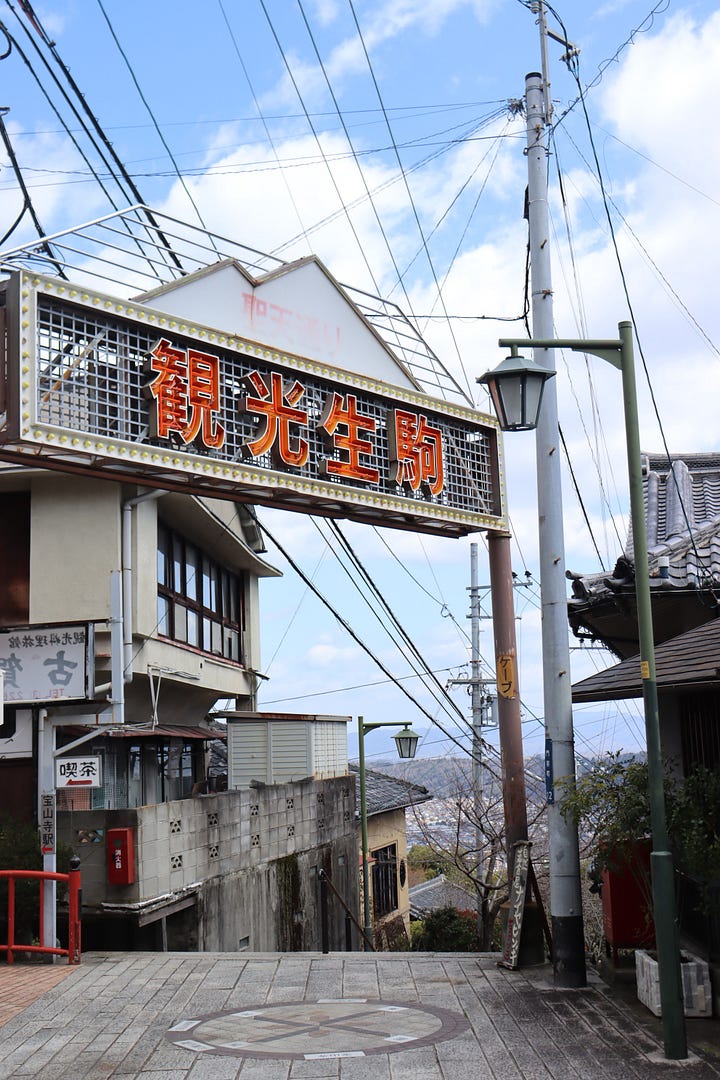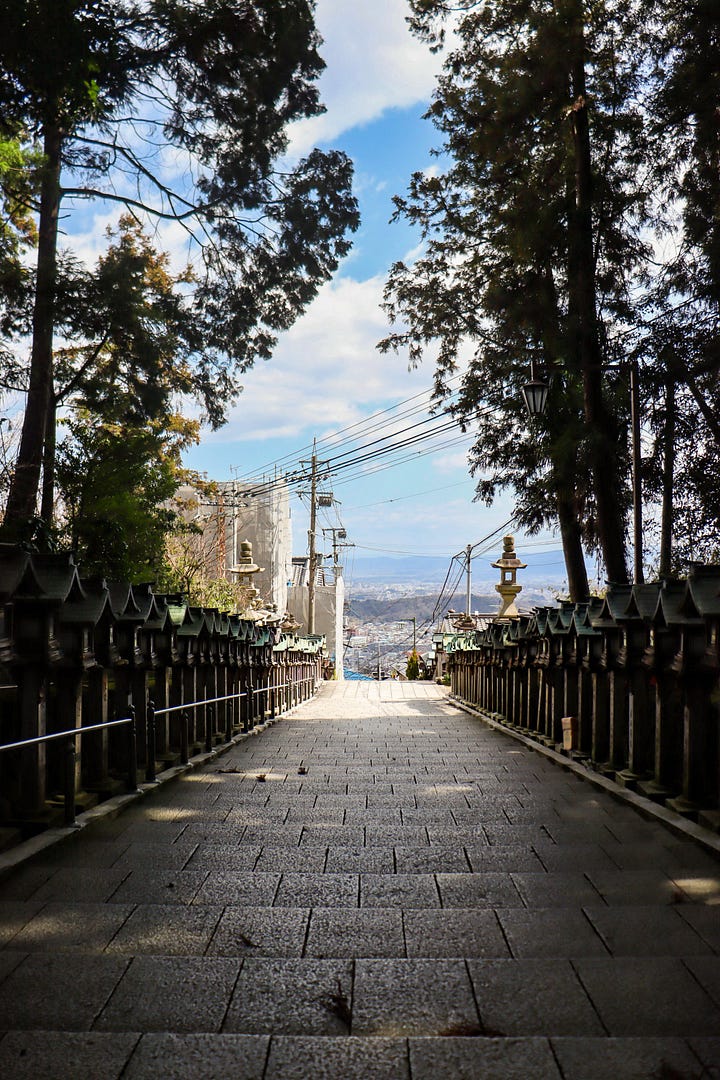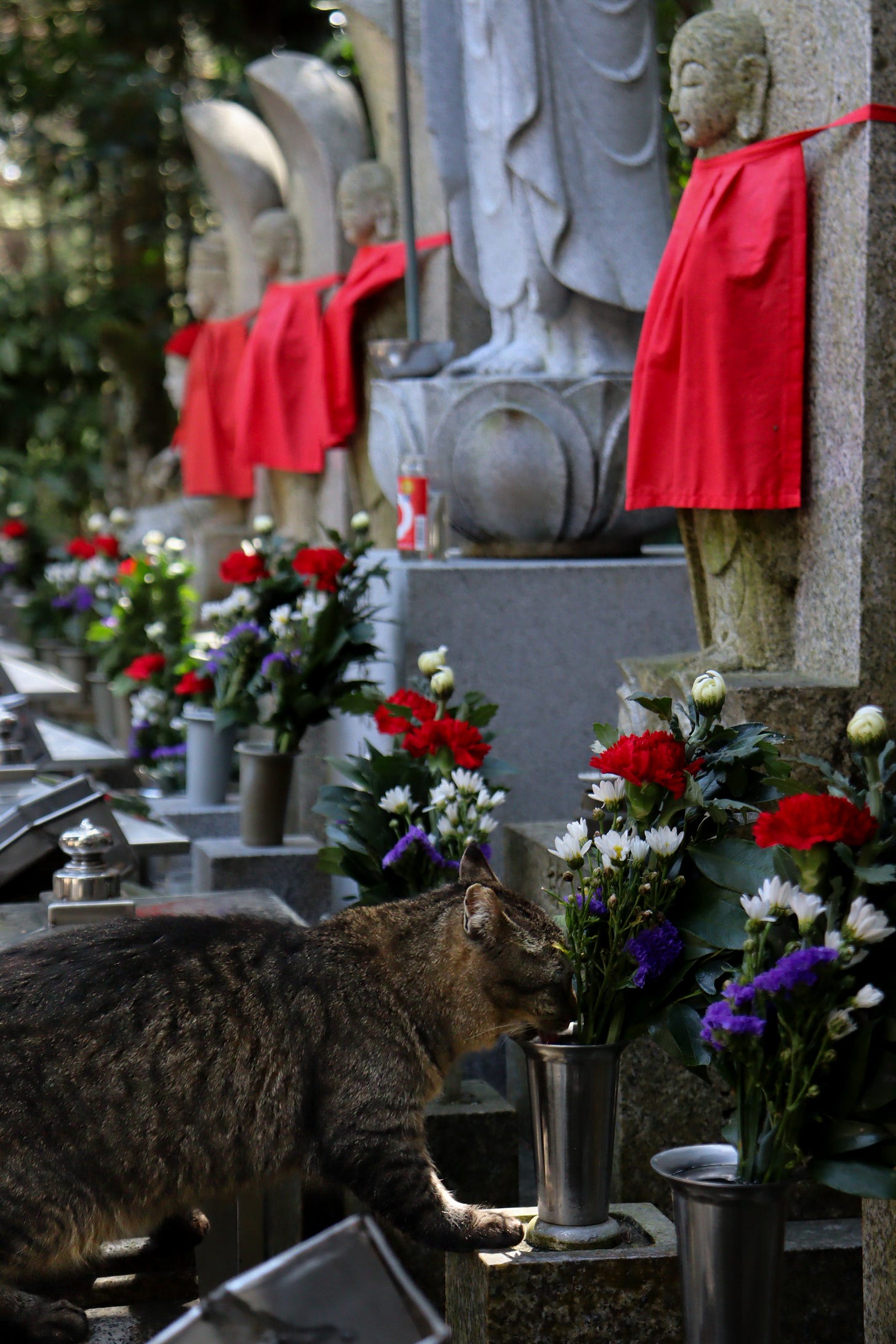In March 2024, my friend George paid me a visit. We both live in Japan, but miles apart; he lives in Fukushima, a snowy and mountainous prefecture north of Tokyo, and I live in Hyogo, a warm, sea-hugged prefecture in Kansai, just west of Osaka. We had five days to catch up, which we spent speed-running a tour of Kansai: Nara, Kyoto, Osaka, Kobe, and Himeji (my home). We woke up early and passed out once the sun set; our days were packed with temples, food, and lots and lots of walking.
We spent a day in Nara. It’s a long train ride from Himeji but balanced by the fact that most of the highlights can be seen in an afternoon, and that both of us were a little intimidated by the deer. So, we had time in the morning to take a local train towards Ikoma, a quiet city best known for its mountain of the same name. Ikoma boasts Japan’s first cable car, which crawls up the mountain in the shape of a dog (oddly reminiscent of the cat bus in My Neighbor Totoro). The cable car was packed with elementary school students, who were boasting how many of the kanji they could read on their tickets.
Their tickets read 鳥居前ー生駒山頂. The first is where we got on, Toriimae, in front of the torii gate (but I have to admit, I missed the gate). Some of the kids could read 鳥 and some could read 前, but as the car climbed the mountain and their anticipation grew, they threw out the gate and looked towards their destination. 生駒 is the name of the city, Ikoma, but the ways they would normally read the first character—sei (as in sensei) or nama (as in raw)—weren’t working, and their half-hearted efforts to sound it out faded. One girl pointed out 山—mountain—but petered off when her friends starting asking about the next character, 頂. Overlapping and argumentative, the conversation filled the cable car and the teachers watched fondly. One child, a boy a bit taller than the rest who had been playing aloof up to then, spoke up: “I dunno how to say it but it means on top of the mountain, guys, on top of the mountain!” And his friends oohed and ahhed and jumped until they were scolded, because at the top of the mountain—and George and I didn’t know this when we set out that morning—is an amusement park full of kiddy rides and festival foods, a bright and exciting wonderland overlooking the region.
George and I didn’t make it to the amusement park. Instead, we got off halfway through at a station marked 宝山寺. We walked a short fifteen minutes through a quiet town that was not yet awake at 11 in the morning, with “Ikomania” branded tote bags in the windows, and crested at the entrance of a 1,360 year old temple—Hozan-ji—marked by a wide path of stone lanterns and towering trees.


The temple was quiet. We were two of a handful of people wandering the grounds, praying and patting the century-old moss. Hozan-ji was once a site for monks in training, a base for ascetic practices and quiet meditation. Away from the rushing crowds of Kyoto and the demanding deer of Nara, Hozan-ji felt apart from time. A hundred feet above us sat a stone Buddha, carved into the mountainside. Ornate golden lotuses and hanging lanterns glinted in the morning sun.
Just on the cusp of spring, the March air pinched our fingers and kept us walking. We climbed through the graveyard. It was a steep forest path littered with fallen leaves and pine needles, the trees hugging the sky above us and creaking in the wind. At the top, we looked over the Nara basin and the quiet town of Ikoma. After days of rushing and planning and moving, the world was still. Behind us, a temple cat crouched at the foot of an altar, drinking from a vase of flowers.






Very lovely read indeed.